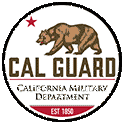Essential for survival
Cal Guard partners with Best Practice Medicine to conduct Prolonged Casualty Care course
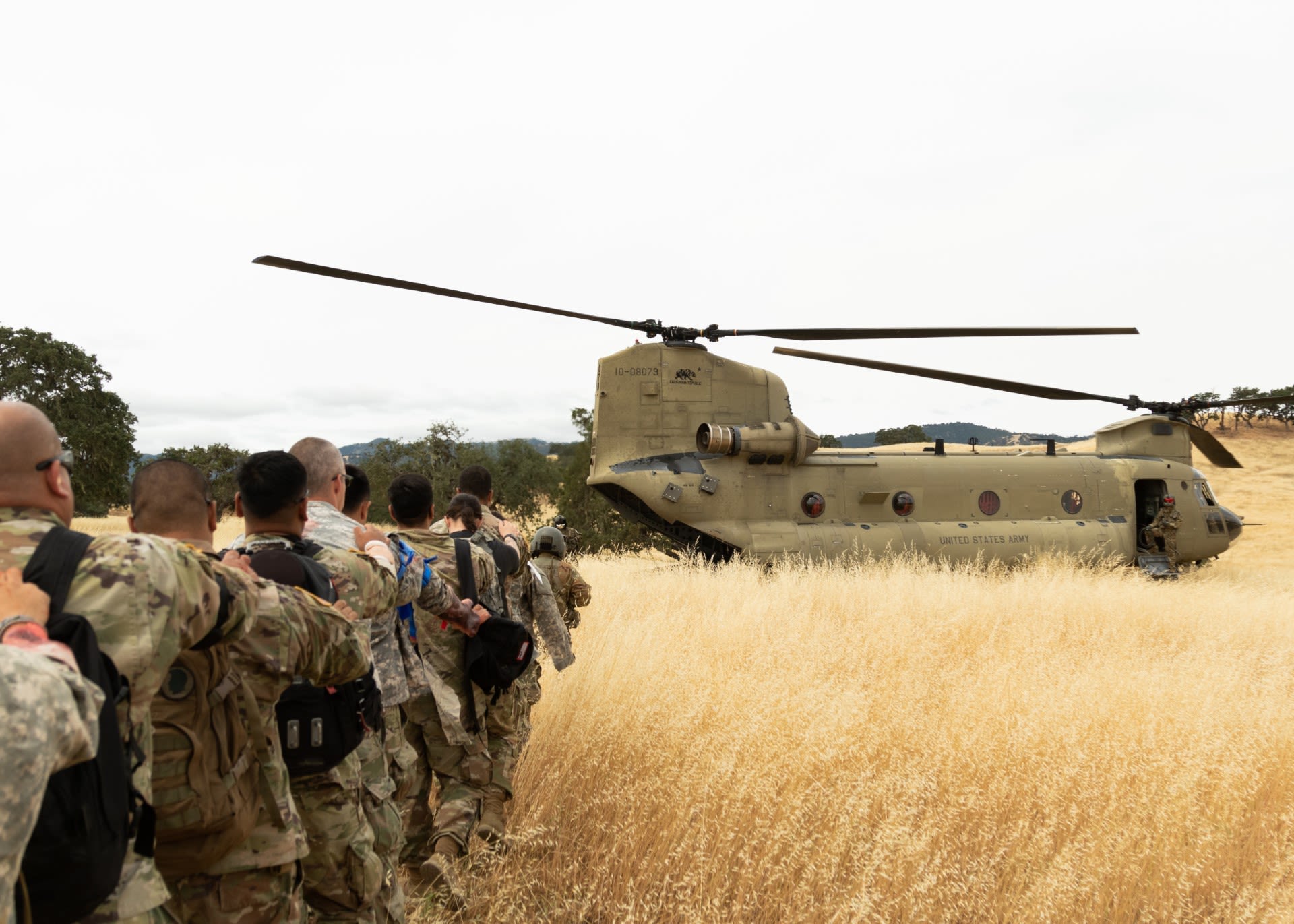
Story and Photos by Cpl. Emma Anderson
40th Combat Aviation Brigade Public Affairs
June 6, 2023
CAMP ROBERTS, Calif. - California National Guard Soldiers participated in one of the first Prolonged Casualty Care course collaborations in the U.S. between civilian and military organizations at Camp Roberts on June 1-6, 2023.
The training involved hands-on learning in a mobile campus, multi-day prolonged patient care, and a culminating event where Soldiers put their knowledge to the test during a simulated mass casualty event.
Spc. Triniti Gistrand, a combat medic with the 3rd Battalion, 140th Aviation Regiment, and participant in the PCC course believes prolonged casualty care is essential for Soldiers to learn as it better equips them for the field.
“We’re getting trained on how to treat casualties in a combat setting for a much longer period of time than what we’re used to; which is that ‘Golden Hour,’” says Gistrand. “We’re learning different types of care while incorporating what we’ve already learned in the past to get overall better patient care outcomes.”
The California Army National Guard collaborated on the PCC course with Best Practice Medicine, an organization located out of Bozeman, Montana, that travels across the country with a mobile campus and instructs individuals through high-consequence medical decisions.
"We integrated with the civilian world because they are the ones who get more patient contact," said SSG Ronald Nunez, a combat medic with the 3rd Battalion, 140th Aviation Regiment, and the noncommissioned officer in charge of the course. "They are out there doing daily nursing care and are more familiar with the process of caring for a patient two to eight days at a time. Their knowledge is valuable," Nunez said.
Many participants enjoyed instruction at the mobile campus, including Sgt. Chris Bishop, a combat medic with the 64th Aviation Support Battalion.
“One of my favorite parts was the hands-on training in the mobile campus,” Bishop said. “They have great mannequins that move, react, and breathe and we can put IVs into them and do other interventions as well. We also get real-time feedback through the computers and instructors.”
After students received four days of instruction, they participated in a simulated mass casualty event. The event included simulated explosions, enemy contact, injuries and a simulated casualty evacuation on a CH-47 Chinook.
Following the simulation, the medics stayed in the field for 40 hours as they continued to work on the simulated injuries medical mannequins sustained during the exercise to replicate the reality that not everyone is able to get evacuated quickly.
Brandon Woodruff, simulation team leader for Better Practice Medicine, said the medics are required to reassess interventions, keep assessing for worsening conditions, keep taking care of the patients and start hospital care in the field because evacuation is not always available."
The collaboration between the California Army National Guard and Best Practice Medicine resulted in invaluable hands-on training.
Cpt. Serenity Holden, an aeromedical physician assistant with the 3rd Battalion, 140th Aviation Regiment and officer-in-charge of the course, said “We get these different mindsets together so that we can get the best collaborative care and instruction.”
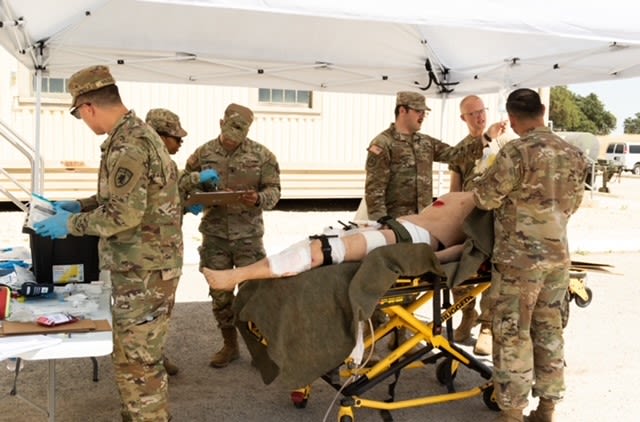
Cal Guard Soldiers participate in a Prolonged Casualty Care course instructed by Best Practice Medicine, an organization that prepares teams for high-consequence clinical decision-making, during annual training at Camp Roberts, Calif., June 3, 2023.
Cal Guard Soldiers participate in a Prolonged Casualty Care course instructed by Best Practice Medicine, an organization that prepares teams for high-consequence clinical decision-making, during annual training at Camp Roberts, Calif., June 3, 2023.
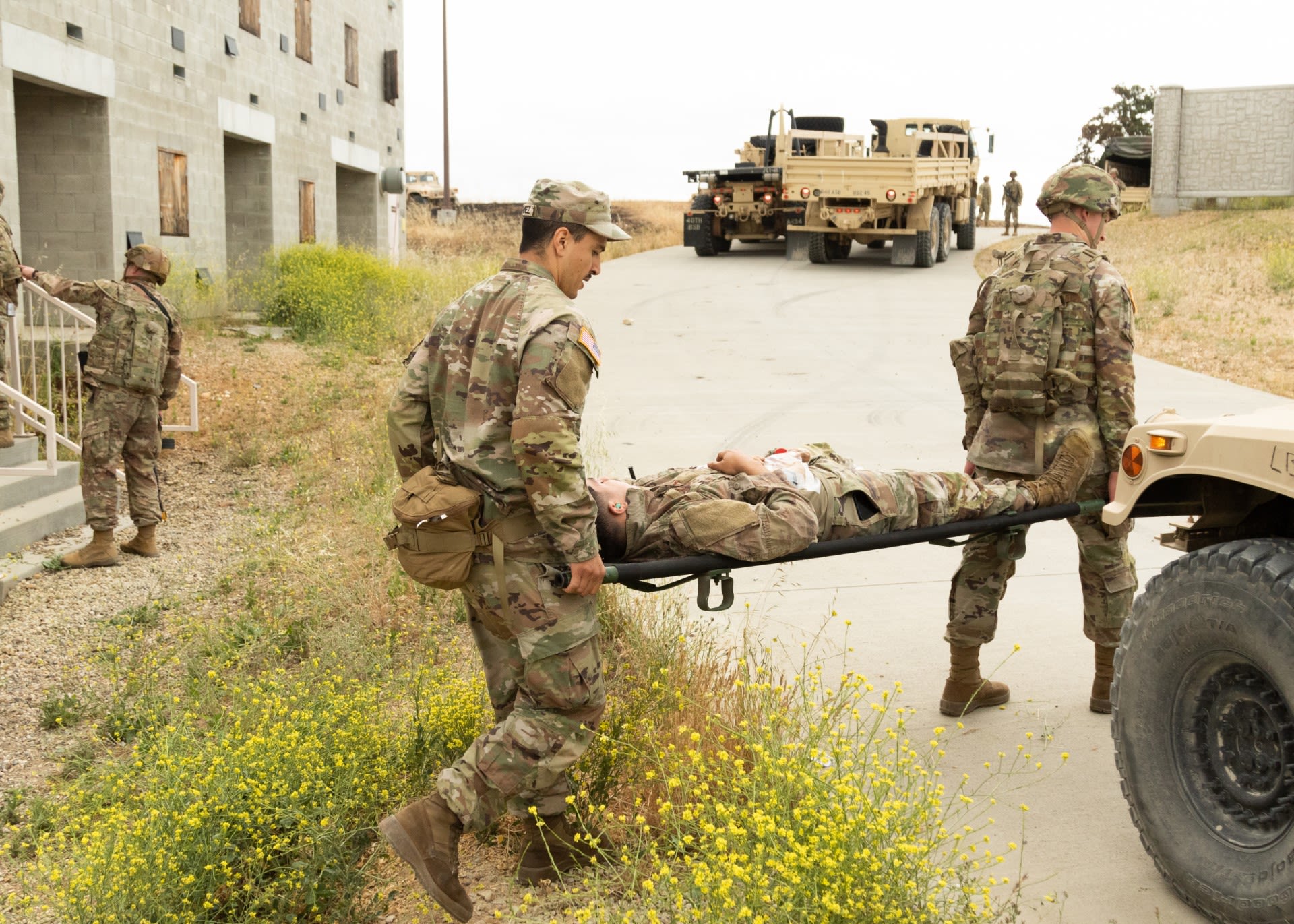
PCC course participants load a simulated casualty for evacuation.
PCC course participants load a simulated casualty for evacuation.
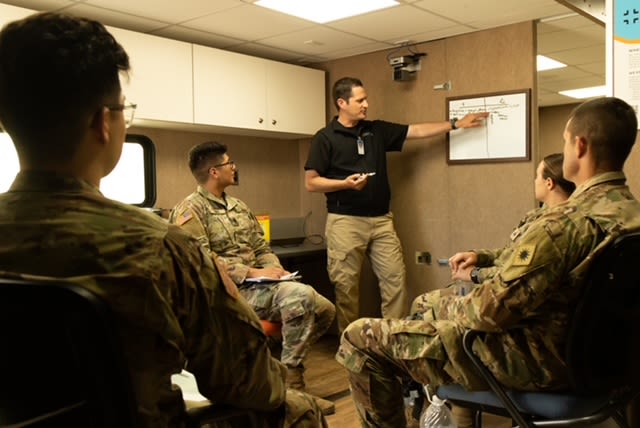
Brandon Woodruff, a simulation team leader with Best Practice, instructs Soldiers for patient care during delayed evacuations, remote environments and events involving many patients in need of assistance.
Brandon Woodruff, a simulation team leader with Best Practice, instructs Soldiers for patient care during delayed evacuations, remote environments and events involving many patients in need of assistance.
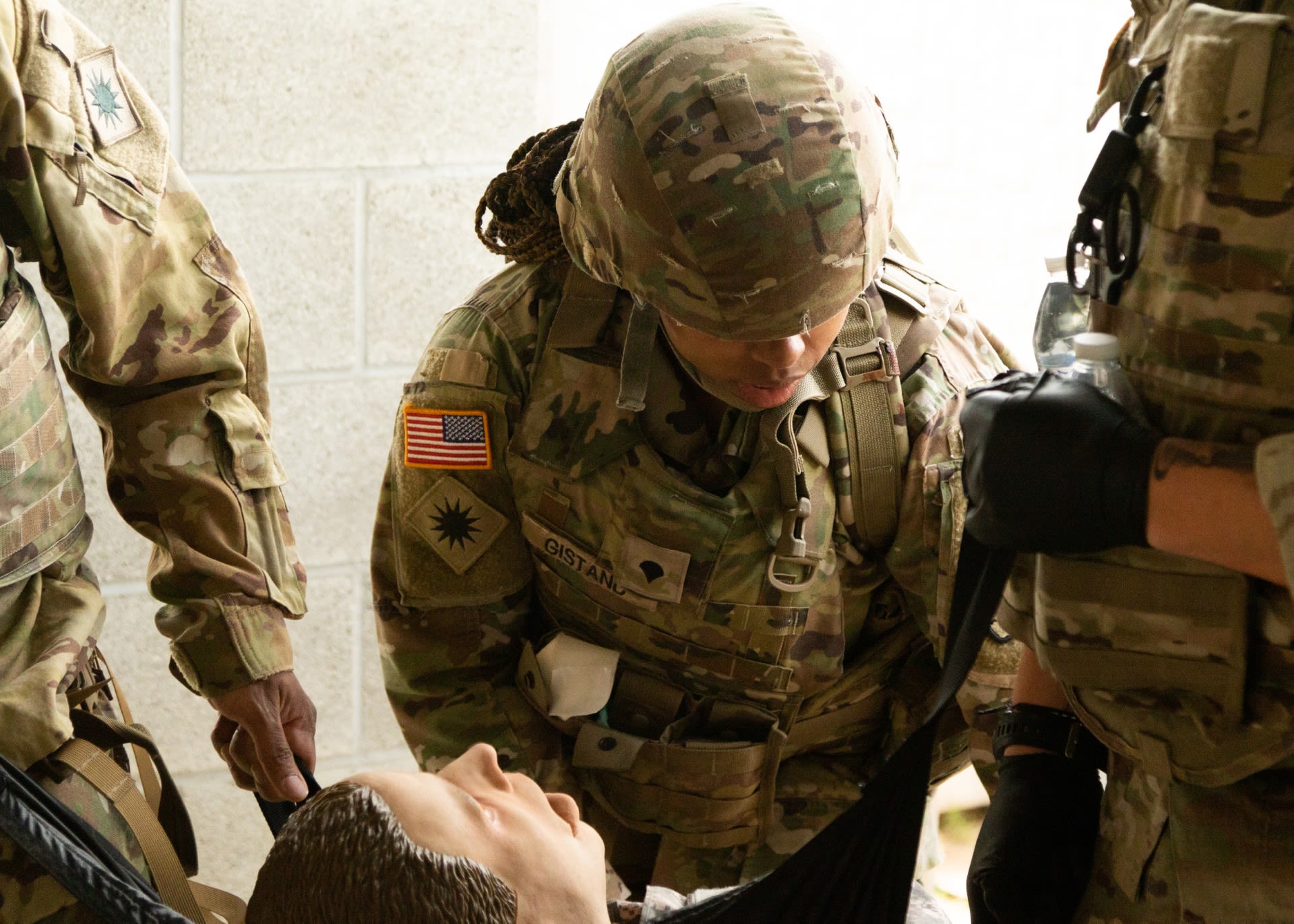
Spc. Triniti Gistand, a Combat Medic in the 3rd Battalion, 140th Aviation Regiment, gives aid to an acting casualty during the PCC simulated mass casualty event.
Spc. Triniti Gistand, a Combat Medic in the 3rd Battalion, 140th Aviation Regiment, gives aid to an acting casualty during the PCC simulated mass casualty event.
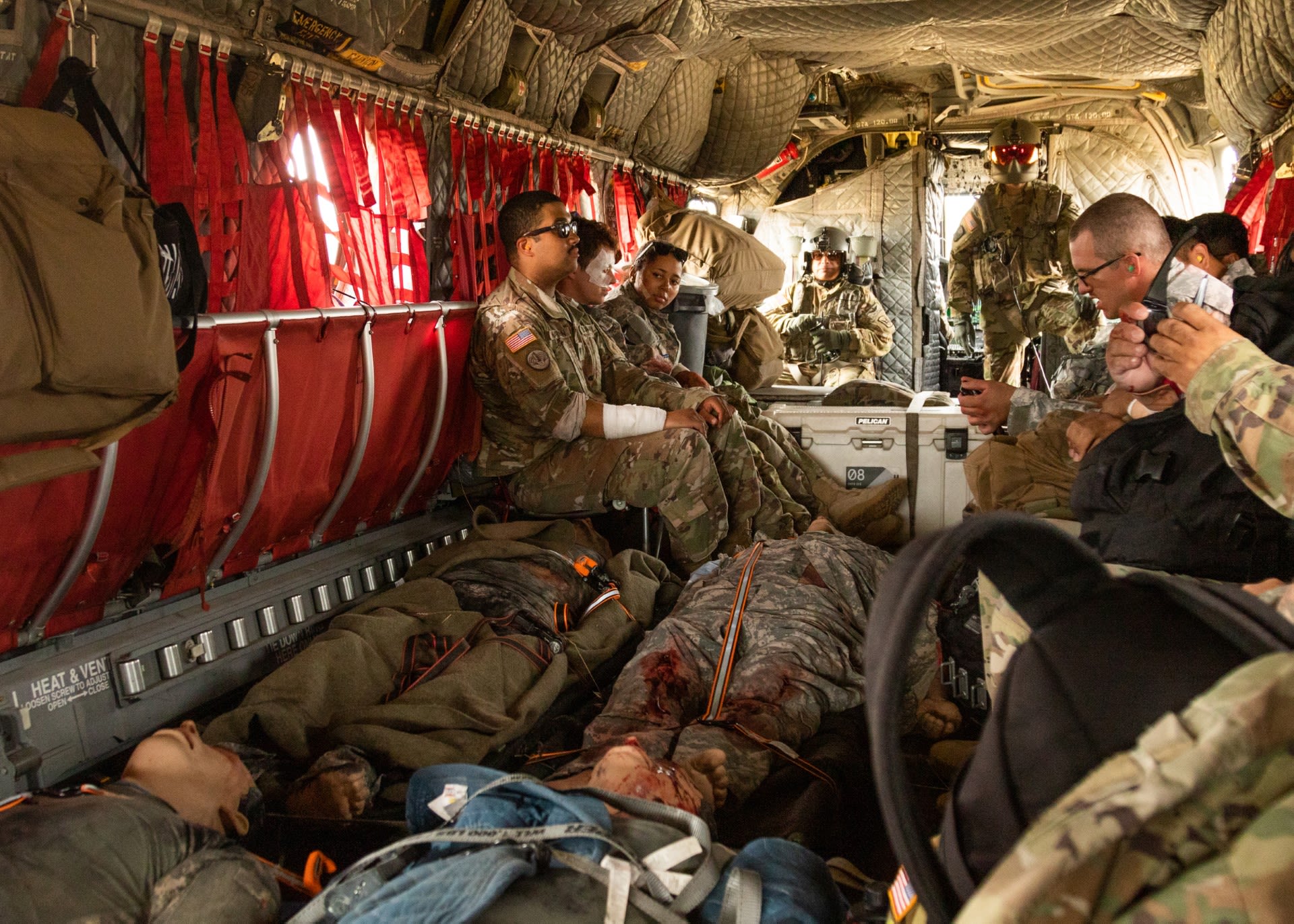
The course included simulated explosions, enemy contact, and injuries and concluded with a simulated casualty evacuation on a CH-47 Chinook.
The course included simulated explosions, enemy contact, and injuries and concluded with a simulated casualty evacuation on a CH-47 Chinook.
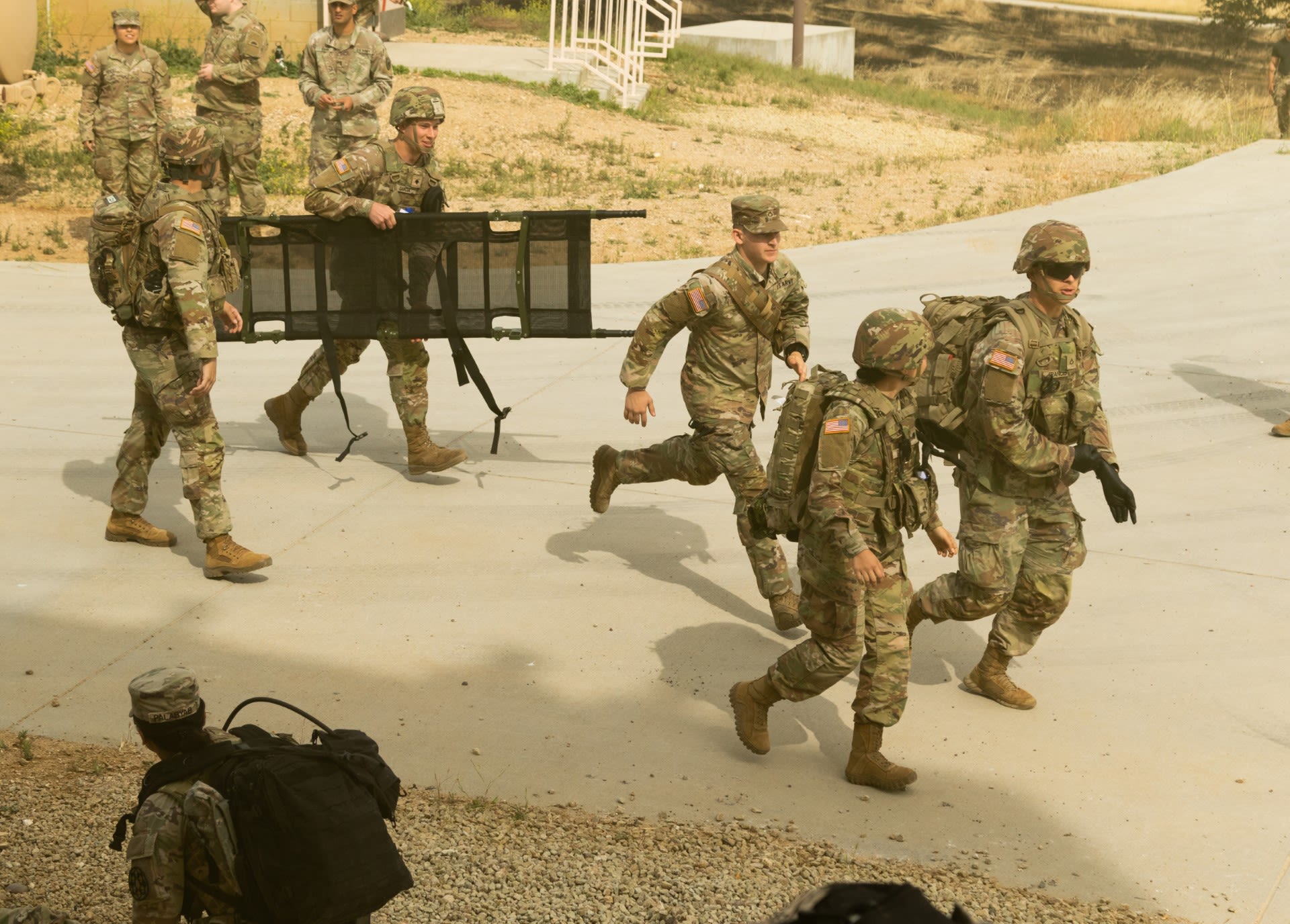
Participating Soldiers run to conduct intense physical patient care and evacuation to an identified location in the area.
Participating Soldiers run to conduct intense physical patient care and evacuation to an identified location in the area.

